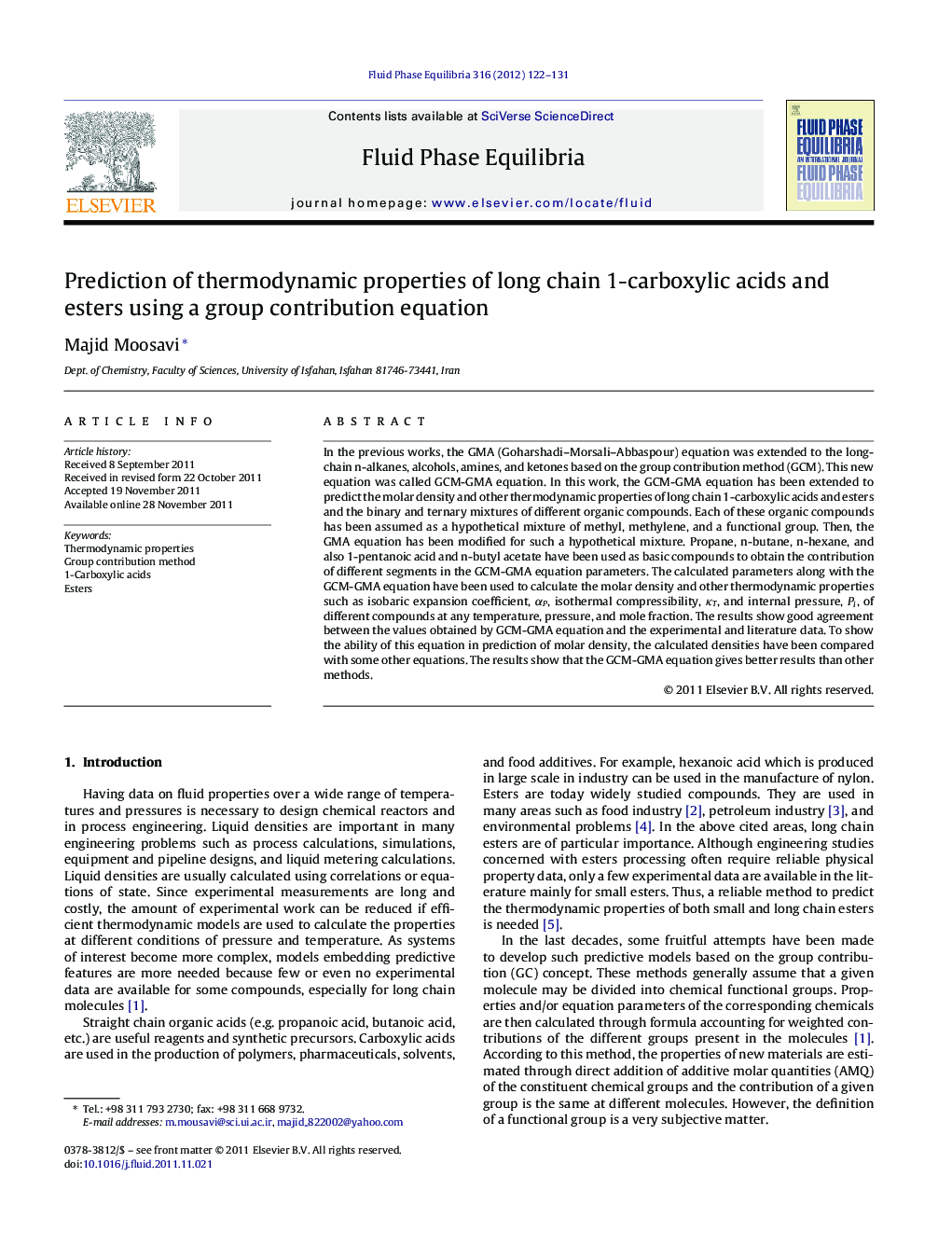| کد مقاله | کد نشریه | سال انتشار | مقاله انگلیسی | نسخه تمام متن |
|---|---|---|---|---|
| 202660 | 460615 | 2012 | 10 صفحه PDF | دانلود رایگان |

In the previous works, the GMA (Goharshadi–Morsali–Abbaspour) equation was extended to the long-chain n-alkanes, alcohols, amines, and ketones based on the group contribution method (GCM). This new equation was called GCM-GMA equation. In this work, the GCM-GMA equation has been extended to predict the molar density and other thermodynamic properties of long chain 1-carboxylic acids and esters and the binary and ternary mixtures of different organic compounds. Each of these organic compounds has been assumed as a hypothetical mixture of methyl, methylene, and a functional group. Then, the GMA equation has been modified for such a hypothetical mixture. Propane, n-butane, n-hexane, and also 1-pentanoic acid and n-butyl acetate have been used as basic compounds to obtain the contribution of different segments in the GCM-GMA equation parameters. The calculated parameters along with the GCM-GMA equation have been used to calculate the molar density and other thermodynamic properties such as isobaric expansion coefficient, αP, isothermal compressibility, κT, and internal pressure, Pi, of different compounds at any temperature, pressure, and mole fraction. The results show good agreement between the values obtained by GCM-GMA equation and the experimental and literature data. To show the ability of this equation in prediction of molar density, the calculated densities have been compared with some other equations. The results show that the GCM-GMA equation gives better results than other methods.
► GCM-GMA equation has been extended to long chain 1-carboxylic acids and esters.
► Each compound has been considered as hypothetical mixture of its constituent groups.
► The contributions of functional groups have been obtained using proper compounds.
► Thermodynamic properties of these compounds and their mixtures have been calculated.
► A wide comparison between this equation and some other EoSs has been made.
Journal: Fluid Phase Equilibria - Volume 316, 25 February 2012, Pages 122–131